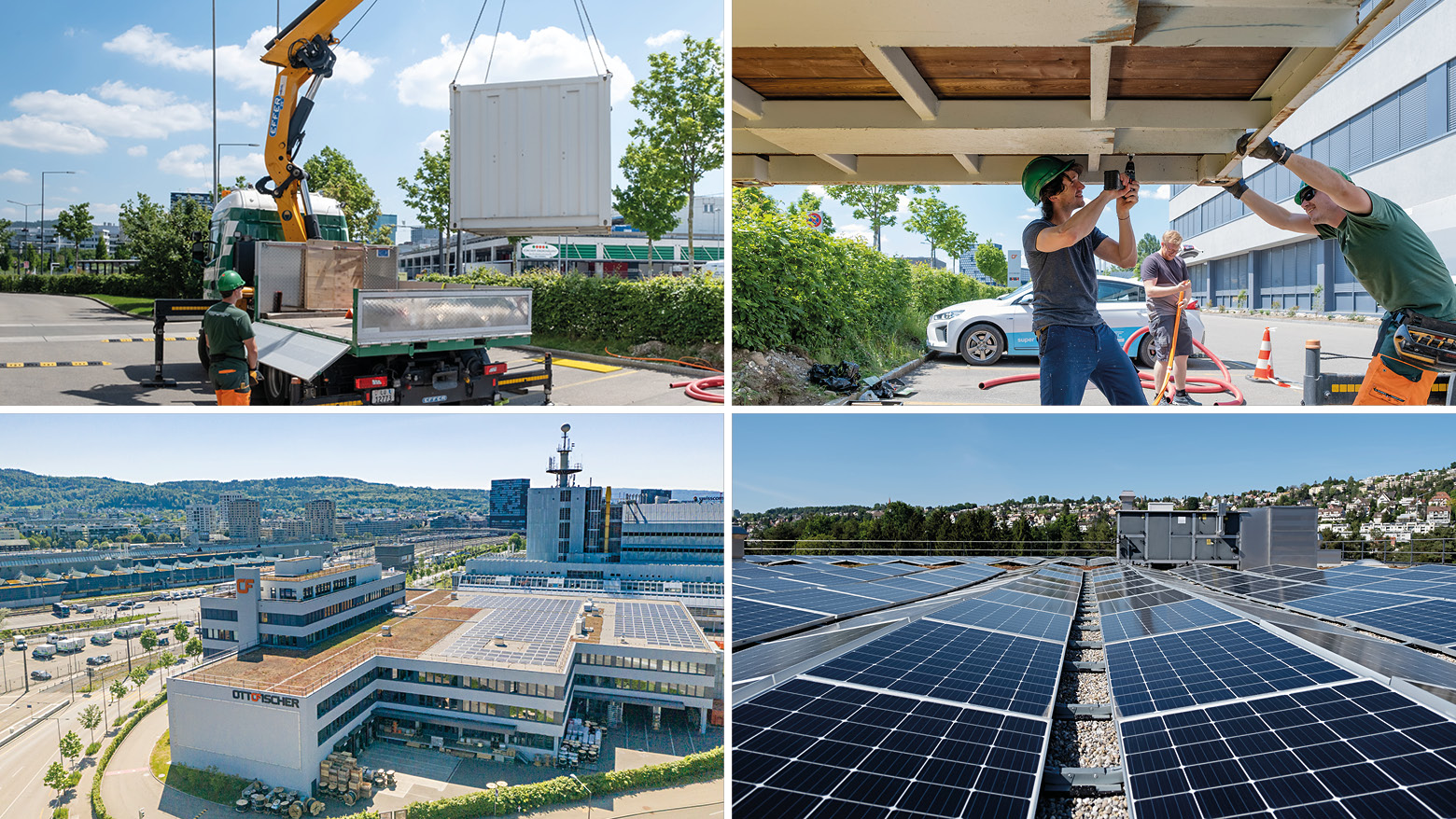

In the future "Second Life" applications
Batteries are increasingly being used in buildings. For example, to minimize peak loads, optimize self-consumption or even as a backup in the event of a grid failure. However, the production of batteries requires key raw materials such as lithium, cobalt and nickel. It would therefore make sense for batteries to remain in use for as long as possible. Batteries that have been used in electric vehicles, for example, are still usable after their use in the car. The continued use ("second life" as it is called) of aged batteries from e-mobility in secondary storage applications can thus significantly extend the life of used lithium-ion batteries. This significantly increases the life cycle assessment of electric vehicles and can generate additional revenue.

The inner workings of the "power cube" with the reused electric car batteries.
Test operation in Zurich
The Otto Fischer company has installed a photovoltaic system with over 900 modules and an output of 257.6 kWp on its roof; the electrical wholesaler consumes around 60 % of the electricity generated in this way itself at its headquarters. In terms of self-consumption of electricity, this could be improved - for the environment and for lower electricity costs. In order to find out whether the use of a storage medium is worthwhile in this respect, it has been decided to test the use of a "second life" battery storage system in collaboration with the company Evtec AG from Kriens - a pilot test that should provide information on the dimensioning of the storage capacity.

The "power cube" is installed to store electricity from the solar system.
Different modes of operation
Battery storage systems can be used and operated in many ways. The two most common modes of operation are self-consumption optimization and peak load optimization, the latter of which is more commonly used by commercial enterprises; as it can be used to reduce power deliveries to distribution grid operators. Furthermore, the storage systems can be used as backup or for control power.
For the pilot project at the parking lot of the Otto Fischer company, a combination of operating modes is applied: on the one hand, self-consumption optimization and, on the other hand, peak load minimization. Peak load minimization is mainly useful on weekdays; with the aim of shifting and smoothing the peak load over time.
The increase in self-consumption, on the other hand, is often aimed at the weekends. After all, self-consumption is then only low, and thus the solar power can be temporarily stored in the battery at midday and used with a time delay in the evening. Which means that the existing PV system with its output of 257.64 kWp is even better utilized: By operating the battery storage system, the company is now aiming to increase self-consumption by around 10-15 % and minimize peak power by 20 kW.

With load peak minimization, the load peak is shifted in time and smoothed.

With the help of a battery storage system, the increase of self-consumption and the minimization of the power peak are made possible.
SIA Leaflet
The rapid development of battery storage systems and their increasingly widespread use has prompted the SIA (Swiss Society of Engineers and Architects) to develop the Code of Practice (SIA 2061) "Battery storage systems in buildings". This contains dimensioning information and offers specifications for the integration and operation of the storage infrastructure, which is used in residential buildings as well as in commercial buildings or in mixed uses.
Briefly presented
The most important key data on the "Second Life" electricity storage system can be found here in a compact overview.
Battery
- "Second Life" battery from the Nissan Leaf model (24 kWh)
- Laminated lithium ion battery
- Battery cells: 192 (24 kWh)
- Battery voltage: 350 V (24 kWh)
- Mains connection: 3 × 400 V AC
Interpretation
- 4 × 24 kWh, Total 96 kWh (nominal)
- 4 × 10 kW DC power module
- Total 40 kW DC charging and discharging power